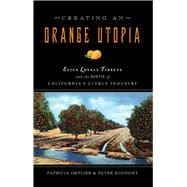
What is included with this book?
The New copy of this book will include any supplemental materials advertised. Please check the title of the book to determine if it should include any access cards, study guides, lab manuals, CDs, etc.
The Used, Rental and eBook copies of this book are not guaranteed to include any supplemental materials. Typically, only the book itself is included. This is true even if the title states it includes any access cards, study guides, lab manuals, CDs, etc.
Historian Esther Klotz believes that the [first navel orange] trees took about one month to make their journey from Washington to Riverside. The young navel orange trees were shipped from the East Coast by rail—first to Gilroy, California, via San Francisco, and then by stagecoach from Gilroy to Los Angeles. The stagecoach trip alone took three days. It is believed that Luther and Eliza Tibbets drove sixty-five miles in their buckboard wagon from Riverside to pick up the trees. According to Klotz’s handwritten notes, the available evidence points to December 10, 1873, as the date the trees arrived. If this is the case, Eliza would have been in Riverside for only a few months.
When the two trees were originally planted, no one really thought much about the event—they had no idea of the trees’ potential value. At the time, the settlers of the Riverside colony were trying out all sorts of potential cash crops, hoping that something would answer their prayers for a sustainable source of income. The navel orange trees were just the latest in a long series of agricultural experiments, most of which brought results that were anything but spectacular. While Riverside would one day become a garden of Eden in the middle of this dry and dusty land, irrigation had not yet become well developed in the area and selection of the right crops for the climate had not yet been perfected.
Mary North Shepard tells the following story of the introduction of the navel orange to Riverside:
"She [Eliza Tibbets] should be accorded a prominent place in the history of California, for it was she who obtained from the Department of Agriculture in Washington, D.C., the two little seedless orange trees which were the parent trees of the Washington Navel Orange . . . When the trees arrived, Mr. and Mrs. Tibbets—together—drove into the yard of Mr. G. W. Garcelon with the package containing them in the back of their wagon. Mr. Garcelon was acknowledged to be our leading horticulturalist and they came to ask his advice about how to plant the trees. He told them that, as they had had such a long journey, they were probably very dry. He directed them to immerse them in a tub of water, let them remain in the water over night, and in the morning he would come and personally supervise the planting of them."